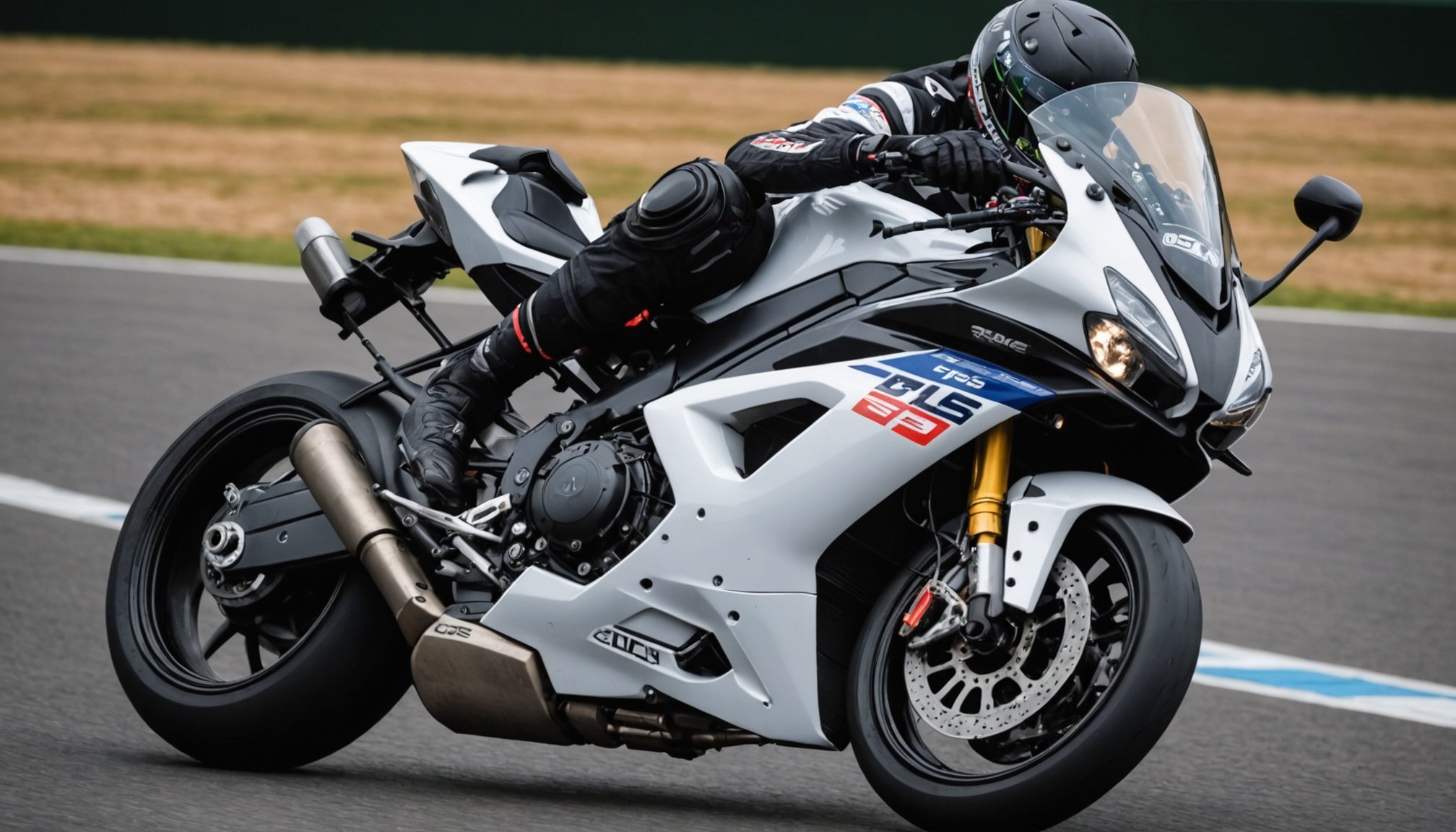Importance of GPS Lap Timers for Sport Bikes
Understanding the benefits of GPS lap timers is essential for anyone serious about improving their sport bike performance. These technologically advanced devices do more than just clock your speed; they are vital tools for racers aiming to refine their skills and enhance their competitive edge.
By capturing precise metrics on aspects such as lap times, acceleration, and deceleration points, GPS lap timers provide invaluable feedback. This detailed data empowers riders to identify their strengths and weaknesses on the track, allowing them to tailor their training and strategies accordingly.
Also to see : Comprehensive handbook for installing dash cameras on sport bikes: ensuring legal compliance for uk road travel
Furthermore, GPS lap timers play a significant role in enhancing racing strategies. By analysing the collected data, riders can make informed decisions, such as optimal braking points and efficient cornering techniques. This ability to adapt one’s strategy based on real-time feedback makes these devices indispensable for competitive racing.
Here’s how they can impact riding techniques:
In parallel : Comprehensive handbook for installing dash cameras on sport bikes: ensuring legal compliance for uk road travel
- Offer insights into cornering speeds and lines taken
- Allow for experimentation with different racing lines and strategies
- Help in achieving consistent lap times through data-driven adjustments
For those dedicated to excelling in racing, embracing racing technology like GPS lap timers is essential, as it enables the fine-tuning of both machine and technique for superior performance.
Selecting the Right GPS Lap Timer
When choosing a GPS lap timer, understanding the essential features and comparing them is crucial. Knowing what makes a lap timer effective can greatly enhance your biking experience.
Key Features to Consider
One of the most critical aspects is signal accuracy and tracking reliability. A lap timer with poor signal accuracy can lead to inconsistent recordings and unreliable data, which defeats its purpose. Therefore, a device that consistently maintains strong GPS connectivity is key.
Data storage capacity and battery life are equally important factors. A GPS lap timer should accommodate ample data storage to keep all your lap records without frequent deletions. Additionally, a robust battery life ensures the device will last throughout long biking sessions without interruption.
Finally, ensure the compatibility with sport bike models. Some lap timers might work better with specific models or brands of bikes, ensuring seamless integration and optimal performance.
Popular GPS Lap Timers on the Market
A variety of well-regarded GPS lap timers are suited for sport bikes. These devices vary widely in price and features. Understanding user satisfaction and reliability ratings can also help determine the best option for your needs. The most acclaimed models often mix mid-range pricing with high reliability.
Comparing GPS Lap Timer Options
Consider the pros and cons of different brands. Special features, such as advanced tracking or data analytics, may distinguish some models in the market. For first-time buyers, starting with a user-friendly model that receives positive feedback from other users can be a wise choice.
Step-by-Step Installation Guide
Installing a GPS lap timer on a sport bike can significantly enhance your riding experience. To begin, ensure you have the necessary tools and equipment at hand. These typically include a set of screwdrivers, adhesive pads or Velcro, wire cutters, and zip ties. Having these tools ready will streamline the process and prevent unnecessary interruptions.
When following the installation instructions, start by securely mounting the lap timer unit on your bike. Preferably, use the handlebars or a flat surface in the cockpit area for easy visibility and access. Ensure the unit’s display is unobstructed to allow clear reading while riding. Avoid positioning it near the engine to prevent overheating and potential damage.
Next, connect the GPS antenna to the unit according to manufacturer specifications. Be sure to route the wires cleanly and securely, using zip ties to avoid interference with any moving parts. Remember, one of the most common mistakes during this setup is neglecting proper wire management, which can lead to tangling or disconnection during use.
Finally, calibrate the device following the user manual to ensure accuracy. Double-check all connections before taking your sport bike out for a test ride, assuring the lap timer’s functionality and reliability on the track.
Optimizing GPS Lap Timer Usage
To fully leverage a GPS lap timer, understanding its potential is key. Effective data interpretation and analysis are crucial for maximizing performance.
Data Interpretation and Analysis
Handling lap time data accurately is critical. Start by recognising the fundamental metrics such as speed, acceleration, and lap consistency. These insights offer a snapshot of performance improvements needed. Moreover, analysing data can unearth trends over time, helping in strategising better racing techniques. By carefully studying these performance metrics, racers can optimise their laps, ultimately enhancing lap timer efficiency.
Maintenance and Troubleshooting Tips
Ensuring accuracy of data necessitates regular maintenance checks. Keep your device updated with the latest firmware and perform routine calibrations to maintain accuracy. Common issues, such as connectivity disruptions or device lag, can often be resolved by consulting the user manual or accessing specialised support. This proactive approach is instrumental in maintaining lap timer efficiency.
Enhancements to Consider
Consider accessories like external antennas for better signal strength or protective cases for enhanced durability. Embracing integration with mobile apps facilitates deeper insights and convenient data management. Additionally, real-time tracking options not only offer immediate feedback but also boost racing strategy adaptability.
Insights into UK Racing Circuits
The UK racing circuits are renowned for their unique characteristics, providing thrilling experiences for both sport bike racing enthusiasts and professionals. Each circuit presents its own set of challenges that require distinct strategies and skills to overcome.
Popular UK Racing Circuits
-
Silverstone Circuit: Famous for its high-speed corners and long straights, Silverstone demands precise control and speed management.
-
Brands Hatch: Known for its elevation changes and tight bends, it tests a rider’s technical skills and agility.
-
Donington Park: With its fast-paced sequences and undulating layout, this circuit requires smooth and consistent cornering techniques.
Circuit Challenges
Each circuit’s intricacies contribute to the overall rigour of sport bike racing. Riders must adapt to varying track conditions, such as weather changes and tire grip levels. For instance, Silverstone is notorious for unpredictable weather, testing a rider’s strategic adaptability.
Maximizing Lap Times
-
Study the Track Layout: Familiarity with track lines is crucial for effective racing strategies.
-
Optimise Bike Setup: Tailor the bike setup for different circuits to enhance performance.
-
Focus on Cornering Techniques: Smooth entries and exits can shave crucial seconds off lap times.
By understanding these UK racing circuits, riders can tailor their approaches to excel on these iconic tracks.
User Testimonials and Experiences
For those seeking insights into GPS lap timers, user feedback plays a pivotal role. Riding enthusiasts frequently share their lap timer experiences, highlighting the profound impact on their performance. Common narratives reveal how these devices refine skills and boost confidence on the track.
Sport bike riders, with varying levels of experience, recount performance tracking stories underscoring the transformative potential of lap timers. One rider remarked that the data collected allowed them to pinpoint areas for improvement, dramatically reducing lap times. Another praised the real-time feedback, enabling immediate adjustments on the circuit.
-
Impact on Performance: Many users confirm substantial progress, attributing their accelerated learning curves to these tools. By providing a detailed analysis of each ride—down to every twist and turn—lap timers empower riders to refine their techniques systematically.
-
Community Feedback: Forums and riding groups often discuss personal experiences, collectively enriching our understanding of these devices. Riders appreciate the shared knowledge, finding camaraderie and support which enhances their journey.
These testimonials exemplify the practical benefits of incorporating lap timers into regular training. By converging technological precision with rider insight, these devices offer a structured path to enhanced performance on the track.










